-
 Bitcoin
Bitcoin $107,352.1067
0.28% -
 Ethereum
Ethereum $2,429.3531
-0.90% -
 Tether USDt
Tether USDt $1.0001
-0.02% -
 XRP
XRP $2.1894
4.62% -
 BNB
BNB $646.7968
0.36% -
 Solana
Solana $147.4290
4.03% -
 USDC
USDC $0.9998
-0.02% -
 TRON
TRON $0.2756
1.52% -
 Dogecoin
Dogecoin $0.1630
1.14% -
 Cardano
Cardano $0.5612
1.18% -
 Hyperliquid
Hyperliquid $37.0580
-0.05% -
 Bitcoin Cash
Bitcoin Cash $496.9410
-0.09% -
 Sui
Sui $2.7318
3.19% -
 Chainlink
Chainlink $13.1503
0.58% -
 UNUS SED LEO
UNUS SED LEO $9.0766
0.55% -
 Avalanche
Avalanche $17.7220
1.46% -
 Stellar
Stellar $0.2380
1.52% -
 Toncoin
Toncoin $2.8439
0.38% -
 Shiba Inu
Shiba Inu $0.0...01143
1.84% -
 Litecoin
Litecoin $85.8053
1.47% -
 Hedera
Hedera $0.1483
2.70% -
 Monero
Monero $314.3240
2.12% -
 Bitget Token
Bitget Token $4.6725
0.77% -
 Dai
Dai $1.0000
0.00% -
 Polkadot
Polkadot $3.3555
1.28% -
 Ethena USDe
Ethena USDe $1.0001
0.02% -
 Uniswap
Uniswap $7.0890
2.64% -
 Pi
Pi $0.5355
-3.40% -
 Pepe
Pepe $0.0...09393
1.06% -
 Aave
Aave $256.8136
-1.90%
How long does it take for USDT to be recharged? Why is there a delay?
USDT recharge times vary from minutes to hours due to network congestion, transaction fees, and platform policies; choose the right network and optimize fees to minimize delays.
May 11, 2025 at 08:14 pm
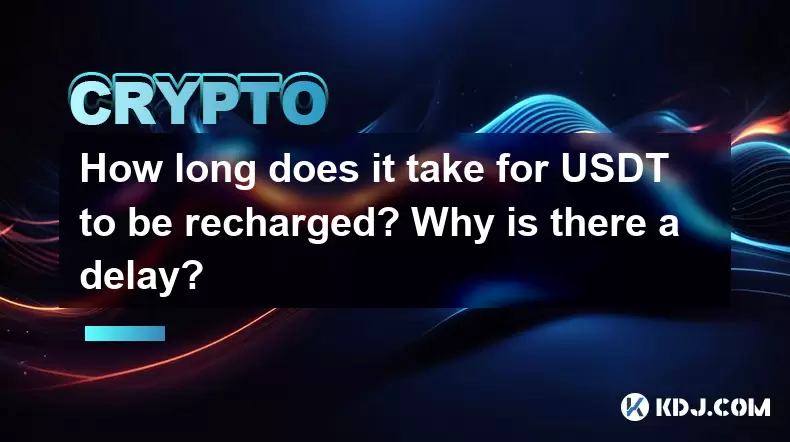
Introduction to USDT Recharge Times
When using Tether (USDT), a popular stablecoin pegged to the US dollar, users often encounter delays in recharging their wallets. Understanding the factors that influence these delays can help manage expectations and improve the user experience. The time it takes for USDT to be recharged can vary significantly, typically ranging from a few minutes to several hours. This article delves into the reasons behind these delays and provides insights into the recharge process.
Factors Influencing USDT Recharge Time
Several factors can affect the time it takes for USDT to be recharged. The blockchain network on which USDT is transacted plays a crucial role. USDT can be issued on various blockchains such as Ethereum (ERC-20), Tron (TRC-20), and others. Each network has its own set of characteristics that impact transaction speed.
- Network Congestion: During periods of high activity, the blockchain can become congested, leading to slower transaction processing times. For instance, if many users are transacting on the Ethereum network simultaneously, it may take longer for your USDT recharge to be confirmed.
- Transaction Fees: The fee you choose to pay for the transaction can also affect the speed. Higher fees incentivize miners or validators to prioritize your transaction, potentially speeding up the recharge process.
- Wallet and Exchange Policies: Different wallets and exchanges have their own processing times and policies. Some may have additional security checks or manual review processes that can delay the recharge.
Understanding the Recharge Process
To better understand why there might be a delay in recharging USDT, it's essential to know the steps involved in the process. When you initiate a USDT recharge, the following happens:
- Transaction Initiation: You send USDT from one wallet to another. This transaction is broadcast to the relevant blockchain network.
- Verification and Confirmation: The transaction needs to be verified and confirmed by nodes or miners on the network. This step can take varying amounts of time depending on the network's current load.
- Finalization: Once the transaction is confirmed, the USDT is credited to the recipient's wallet. However, some platforms may have additional steps or waiting periods before the funds are fully accessible.
Common Delays in USDT Recharges
Delays in USDT recharges are not uncommon and can be attributed to several reasons. Here are some of the most common issues:
- Blockchain Network Issues: As mentioned earlier, network congestion is a primary cause of delays. During peak times, such as when there are significant market movements or new token launches, the network can be overwhelmed.
- Security Measures: Many platforms implement security protocols to protect against fraud and unauthorized transactions. These measures can include manual reviews or holding periods, which can delay the recharge process.
- Technical Glitches: Occasionally, technical issues with the wallet or exchange's infrastructure can cause delays. These can range from server problems to software bugs that need to be resolved.
How to Minimize Delays in USDT Recharges
While it's impossible to completely eliminate delays, there are steps you can take to minimize them:
- Choose the Right Network: If you have the option, select a less congested blockchain for your USDT transactions. For instance, TRC-20 might be faster than ERC-20 during peak times.
- Optimize Transaction Fees: Paying a higher fee can help prioritize your transaction. Many wallets allow you to set custom fees, so consider this option if you need a faster recharge.
- Use Trusted Platforms: Opt for reputable wallets and exchanges that have efficient processing times and fewer security delays.
Detailed Steps to Recharge USDT
Here's a step-by-step guide on how to recharge USDT, ensuring you understand the process and potential points of delay:
- Select the Correct Network: Ensure you're using the same network for both the sending and receiving wallets (e.g., both ERC-20 or both TRC-20).
- Enter the Recipient Address: Carefully enter the recipient's wallet address. A mistake here can result in lost funds.
- Specify the Amount: Decide on the amount of USDT you want to send and enter it into the transaction field.
- Set the Transaction Fee: Choose an appropriate fee. Higher fees can lead to faster processing but at a higher cost.
- Confirm and Send: Review all details and confirm the transaction. Once sent, the transaction is broadcast to the network.
- Monitor the Transaction: Use a blockchain explorer to track the status of your transaction. This can give you an idea of when it might be confirmed.
- Wait for Confirmation: Depending on the network, this can take anywhere from a few minutes to several hours.
- Check Your Wallet: Once the transaction is confirmed, the USDT should appear in your wallet. If it doesn't, contact the wallet's support team.
Frequently Asked Questions
Q: Can I speed up a USDT transaction after it has been sent?
A: Once a USDT transaction is sent, it cannot be sped up directly. However, you can try to contact the support team of the wallet or exchange you used to see if they can expedite the process on their end. Additionally, choosing a higher transaction fee before sending can help prioritize your transaction.
Q: What should I do if my USDT recharge is taking longer than expected?
A: If your USDT recharge is taking longer than expected, first check the status of the transaction on a blockchain explorer. If it shows as pending, it's likely due to network congestion. If it shows as confirmed but the funds haven't appeared in your wallet, contact the wallet or exchange's customer support for assistance.
Q: Are there any risks associated with recharging USDT?
A: Yes, there are risks involved. The primary risk is sending USDT to the wrong address, which can result in permanent loss of funds. Additionally, using less reputable platforms can expose you to security risks. Always double-check the recipient address and use trusted wallets and exchanges.
Q: Can I cancel a USDT recharge if it's taking too long?
A: Once a USDT transaction is broadcast to the blockchain, it cannot be canceled. If the transaction is still pending, you might need to wait for it to be confirmed or rejected by the network. If you've made an error, such as sending to the wrong address, the funds cannot be retrieved.
Disclaimer:info@kdj.com
The information provided is not trading advice. kdj.com does not assume any responsibility for any investments made based on the information provided in this article. Cryptocurrencies are highly volatile and it is highly recommended that you invest with caution after thorough research!
If you believe that the content used on this website infringes your copyright, please contact us immediately (info@kdj.com) and we will delete it promptly.
- Crypto's First Principles: Are Returns Still Rooted in Fairness?
- 2025-06-28 22:30:12
- Kaspa (KAS) Price Prediction 2025: Will It Hit $1?
- 2025-06-28 22:50:12
- A16Z Dumps $COMP on Coinbase: Liquidation or Rebalancing?
- 2025-06-28 22:30:12
- KraneShares, Coinbase, and Digital Assets: A New Era for Institutional Crypto?
- 2025-06-28 23:07:14
- Bitcoin Solaris: Mobile Mining Revolution & Beyond!
- 2025-06-28 22:35:13
- Bitcoin, Post-Dollar, and US Preparation: A New Digital Gold Standard?
- 2025-06-28 22:52:13
Related knowledge
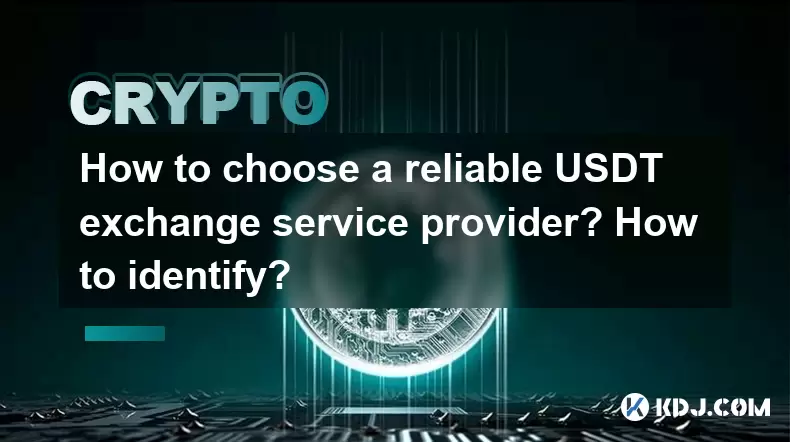
How to choose a reliable USDT exchange service provider? How to identify?
Jun 12,2025 at 03:15pm
Understanding the Role of USDT in Cryptocurrency TradingUSDT (Tether) is one of the most widely used stablecoins in the cryptocurrency market. It is designed to maintain a 1:1 peg with the U.S. dollar, offering traders and investors a way to hedge against volatility while remaining within the crypto ecosystem. Choosing a reliable USDT exchange service p...
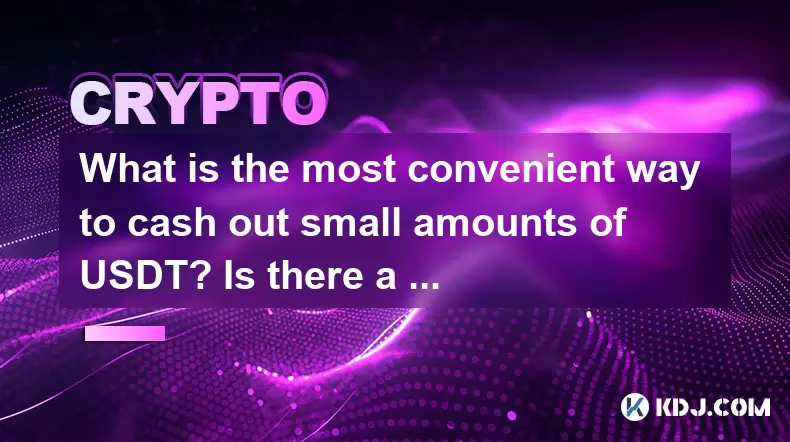
What is the most convenient way to cash out small amounts of USDT? Is there a shortcut?
Jun 11,2025 at 11:00pm
Understanding the Need to Cash Out Small USDT AmountsCashing out small amounts of USDT can be a challenge for many crypto users. Traditional methods often involve high fees, minimum withdrawal limits, or cumbersome verification processes that make it inefficient for small transactions. The key is to find a method that balances speed, cost, and convenien...
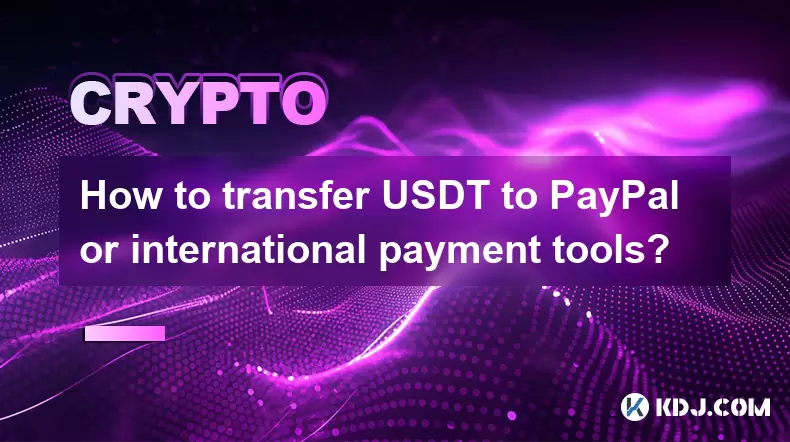
How to transfer USDT to PayPal or international payment tools?
Jun 15,2025 at 05:28am
Understanding the Basics of USDT and PayPal IntegrationUSDT (Tether) is a stablecoin pegged to the US dollar, offering blockchain-based value transfer with minimal volatility. PayPal, on the other hand, is a centralized digital wallet that facilitates fiat currency transactions globally. Direct integration between USDT and PayPal does not exist due to t...
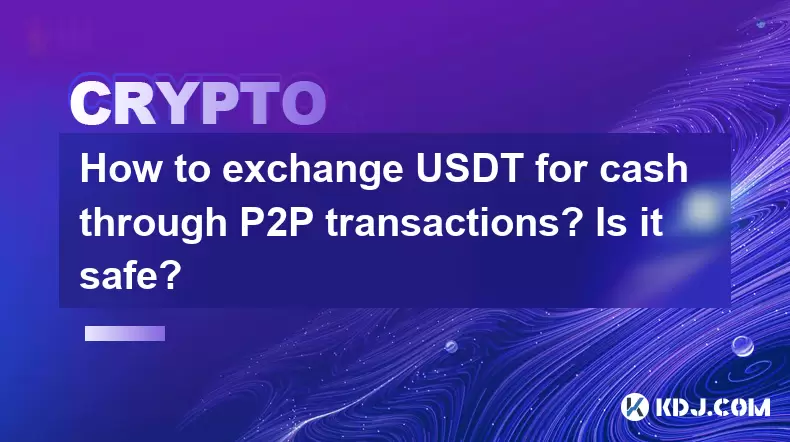
How to exchange USDT for cash through P2P transactions? Is it safe?
Jun 18,2025 at 07:56am
Understanding USDT and P2P TransactionsTether (USDT) is a stablecoin pegged to the value of the US dollar, making it a popular choice for users who want to avoid the volatility of other cryptocurrencies while still participating in the crypto ecosystem. Peer-to-peer (P2P) transactions allow individuals to trade directly with each other without going thr...
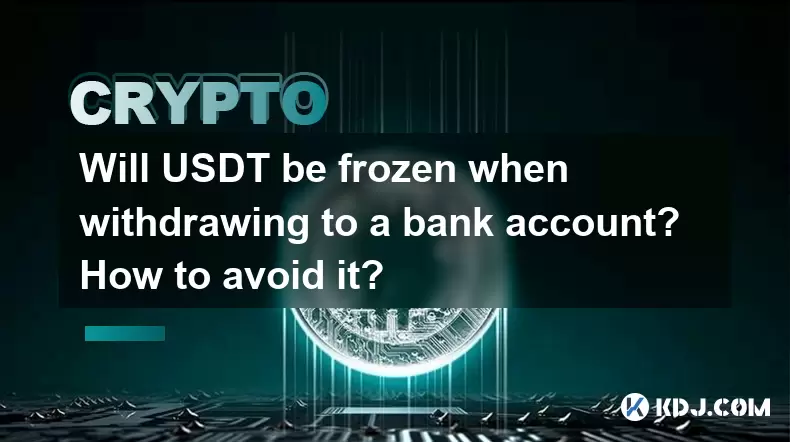
Will USDT be frozen when withdrawing to a bank account? How to avoid it?
Jun 15,2025 at 10:03am
Understanding USDT Withdrawals and Bank Account Freezing RisksWhen users decide to withdraw USDT (Tether) to a bank account, one of the most common concerns is whether their funds will be frozen during the process. This concern stems from real-life cases where individuals have encountered delays or restrictions when converting digital assets into fiat c...
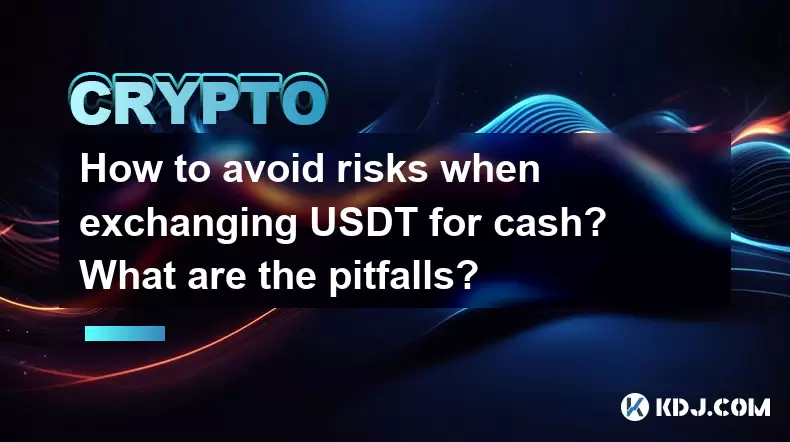
How to avoid risks when exchanging USDT for cash? What are the pitfalls?
Jun 11,2025 at 08:14pm
Understanding the Risks of Exchanging USDT for CashWhen exchanging USDT (Tether) for cash, users must be aware of the potential risks involved. As a stablecoin pegged to the US dollar, USDT is widely used in crypto transactions due to its price stability. However, converting it into fiat currency like USD or CNY can expose users to several pitfalls, inc...

How to choose a reliable USDT exchange service provider? How to identify?
Jun 12,2025 at 03:15pm
Understanding the Role of USDT in Cryptocurrency TradingUSDT (Tether) is one of the most widely used stablecoins in the cryptocurrency market. It is designed to maintain a 1:1 peg with the U.S. dollar, offering traders and investors a way to hedge against volatility while remaining within the crypto ecosystem. Choosing a reliable USDT exchange service p...

What is the most convenient way to cash out small amounts of USDT? Is there a shortcut?
Jun 11,2025 at 11:00pm
Understanding the Need to Cash Out Small USDT AmountsCashing out small amounts of USDT can be a challenge for many crypto users. Traditional methods often involve high fees, minimum withdrawal limits, or cumbersome verification processes that make it inefficient for small transactions. The key is to find a method that balances speed, cost, and convenien...

How to transfer USDT to PayPal or international payment tools?
Jun 15,2025 at 05:28am
Understanding the Basics of USDT and PayPal IntegrationUSDT (Tether) is a stablecoin pegged to the US dollar, offering blockchain-based value transfer with minimal volatility. PayPal, on the other hand, is a centralized digital wallet that facilitates fiat currency transactions globally. Direct integration between USDT and PayPal does not exist due to t...

How to exchange USDT for cash through P2P transactions? Is it safe?
Jun 18,2025 at 07:56am
Understanding USDT and P2P TransactionsTether (USDT) is a stablecoin pegged to the value of the US dollar, making it a popular choice for users who want to avoid the volatility of other cryptocurrencies while still participating in the crypto ecosystem. Peer-to-peer (P2P) transactions allow individuals to trade directly with each other without going thr...

Will USDT be frozen when withdrawing to a bank account? How to avoid it?
Jun 15,2025 at 10:03am
Understanding USDT Withdrawals and Bank Account Freezing RisksWhen users decide to withdraw USDT (Tether) to a bank account, one of the most common concerns is whether their funds will be frozen during the process. This concern stems from real-life cases where individuals have encountered delays or restrictions when converting digital assets into fiat c...

How to avoid risks when exchanging USDT for cash? What are the pitfalls?
Jun 11,2025 at 08:14pm
Understanding the Risks of Exchanging USDT for CashWhen exchanging USDT (Tether) for cash, users must be aware of the potential risks involved. As a stablecoin pegged to the US dollar, USDT is widely used in crypto transactions due to its price stability. However, converting it into fiat currency like USD or CNY can expose users to several pitfalls, inc...
See all articles
























































































